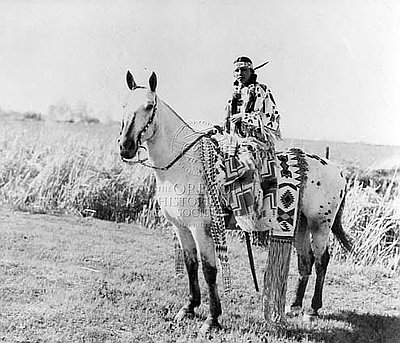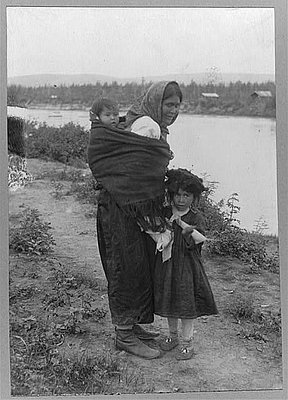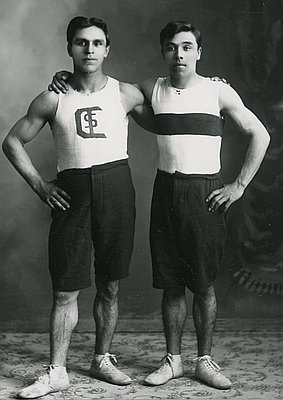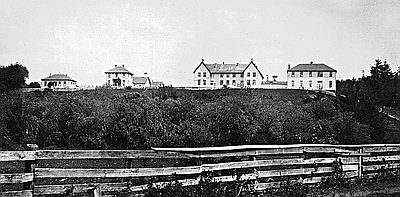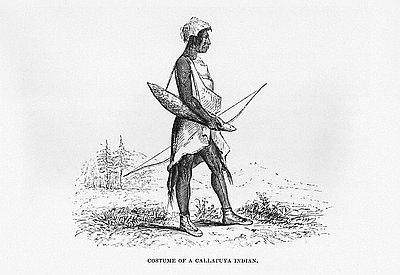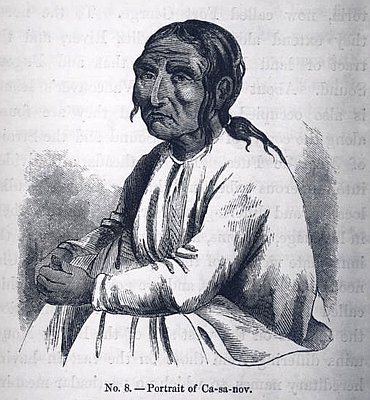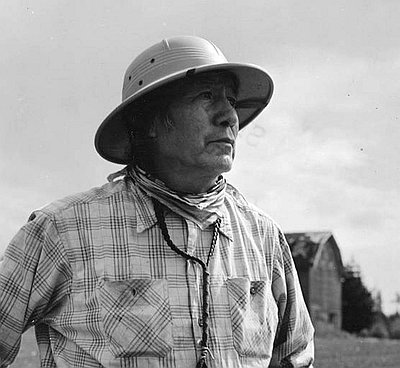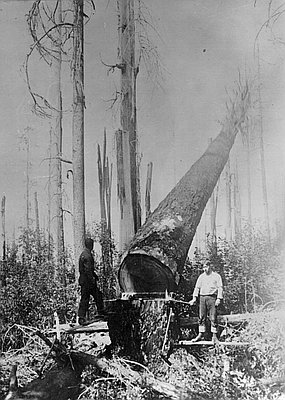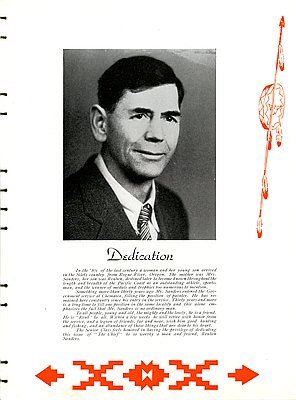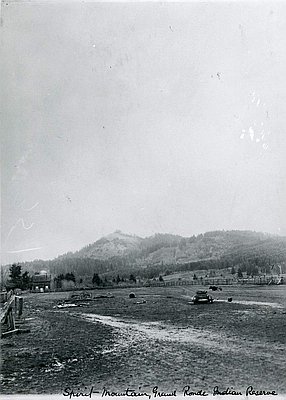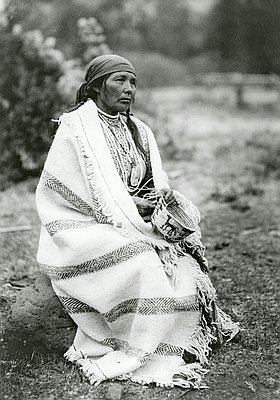David Lewis (Takelma, Chinook, Molalla, Santiam Kalapuya)
David G. Lewis is a member of the Confederated Tribes of Grand Ronde, a descendant of the Takelma, Chinook, Molalla, and Santiam Kalapuya peoples of western Oregon. Lewis engaged in research on the tribes of the Pacific Northwest while studying at the University of Oregon and working for the Confederated Tribe of Grand Ronde. He also served as the director of the Southwest Oregon Research Project Collection at the UO Knight Library Special Collections and University Archives. He has served in the culture programs at Grand Ronde, first on the Culture Committee, then as department manager, cultural liaison, tribal historian, and manager of the Exhibits and Archives program. For two terms he sat on the Oregon Heritage Commission, serving as chair for two years. He has a Ph.D. in anthropology from the University of Oregon (2009) and is an assistant professor of anthropology and indigenous studies at Oregon State University. Lewis conducts research, gives historical presentations, and writes articles about the tribes of Oregon. He is the author of Tribal Histories of the Willamette Valley (2024).
Author's Entries
-
![Alsea Subagency of Siletz Reservation]()
Alsea Subagency of Siletz Reservation
In September 1856, Joel Palmer, the Superintendent of Indian Affairs for Oregon, established the Alsea Subagency on the Coast Reservation to manage Indians who lived between Coos Bay and the Alsea River. The federal government managed reservation lands through a series of agencies and subagencies, where federal Indian …
Oregon Encyclopedia
-
![Anson Dart (1797-1879)]()
Anson Dart (1797-1879)
In 1850, Anson Dart (1797-1879), of Wisconsin, was appointed as the first superintendent of Indian Affairs for the Oregon Territory. He received his instructions on July 20, 1850, and arrived in Oregon in October with his secretary, P. C. Dart. His mission was to negotiate treaties between the federal government …
Oregon Encyclopedia
-
![Appaloosa horse breed]()
Appaloosa horse breed
The Appaloosa is a horse breed associated historically with the Nez Perce (Niimipu) Tribe. The name may originate from “a Palouse,” which referred to the region where the horses were bred. It is likely that these horses originally came from a variety of Spanish horses—so-called spotted horses—that were traded into …
Oregon Encyclopedia
-
![Athapaskan Indians]()
Athapaskan Indians
According to Tolowa oral histories, the Athapaskan people of southern Oregon and northern California arrived from the north in ancient times, traveling by canoe. Linguists estimate that they arrived in the region about 700 years ago. The Athapaskans lived in the valleys on the Rogue and Illinois rivers, where the …
Oregon Encyclopedia
-
![Capt. Leonard White (1827-1870)]()
Capt. Leonard White (1827-1870)
Leonard “Len” White, a pioneering riverboat captain on the Willamette and Columbia Rivers, was the first to successfully navigate a sternwheeler to Corvallis, Harrisburg, and Eugene. He established a regular shipping route on the Willamette and later concentrated his talents on navigating and opening routes on the …
Oregon Encyclopedia
-
![Cascadia Cave]()
Cascadia Cave
Cascadia Cave, near the South Santiam River, is one of the most significant cultural resources of the Indigenous peoples of the Cascade Mountains and the Willamette Valley. The cave, which is actually a shallow rock shelter, has a pronounced overhang that offers shelter from the weather. It is a …
Oregon Encyclopedia
-
![Chemawa Indian School Athletics Program]()
Chemawa Indian School Athletics Program
Chemawa Indian School has been a leader in organized athletics in the Willamette Valley since the 1890s, winning state titles in football, basketball, track, cross country running, and basketball. Opened in Forest Grove in 1880 and moved to Salem in 1885, Chemawa was the second off-reservation boarding school in the …
Oregon Encyclopedia
-
![City of Salem]()
City of Salem
Salem, the capital of Oregon, is located at a crossroads of trade and travel on former prairie lands along the Willamette River. The city was designated the seat of Marion County in 1849 and the territorial capital in 1851-1852. Incorporated in 1857, Salem served as the de facto state …
Oregon Encyclopedia
-
Coast Indian Reservation
Beginning in 1853, Superintendent of Indian Affairs Joel Palmer negotiated treaties with the western Oregon tribes. The treaties stipulated that a permanent reservation, the Coast Reservation, would be set aside for all of the western Oregon tribes; in exchange, the tribes would cede their lands to the United States. The …
Oregon Encyclopedia
-
![Confederated Tribes of Grand Ronde]()
Confederated Tribes of Grand Ronde
The Confederated Tribes of Grand Ronde Community of Oregon is a confederation of over twenty-seven tribes and bands from western Oregon, southern Washington, and northern California. The tribes were removed to the Grand Ronde Reservation in 1856 by the U.S. government in order to free the land for American pioneer …
Oregon Encyclopedia
-
![Fr. Adrien Croquet (1818-1902)]()
Fr. Adrien Croquet (1818-1902)
Father Adrien-Joseph Croquet (pronounced “Crockett” locally) arrived in Oregon in 1859 from Belgium. Throughout his time in Oregon, he maintained an eclectic missionary lifestyle, traveling each year throughout the Willamette Valley, to Indian reservations, and along the Oregon coast. Croquet grew up in Braine l'Alleud, Belgium, and was ordained …
Oregon Encyclopedia
-
![Franklin Patrick Herbert Jr. (1920–1986)]()
Franklin Patrick Herbert Jr. (1920–1986)
Frank Herbert is considered a grandmaster of science fiction writing. His best known work was Dune World (1965), later renamed Dune. The idea for the desert planet of Dune was based on Herbert’s experiences at the Oregon Dunes during the 1950s. His imagining of a world that consisted only …
Oregon Encyclopedia
-
![Gus Envela Jr. (1968-)]()
Gus Envela Jr. (1968-)
Gus Envela Jr., an émigré to Oregon from Equatorial Guinea, grew up in Salem and became a star athlete at Douglas McKay High School. Envela set nearly all state high school sprinting records in the early 1980s. Later, he gained national recognition by attaining All-American status and became the first …
Oregon Encyclopedia
-
![Halito (Chief Halo) (?-1892)]()
Halito (Chief Halo) (?-1892)
Chief Halito, commonly shortened to Chief Halo (meaning “having little” or “needing little”), was leader of the Yoncalla Kalapuya tribe and was married to Du-Ni-Wi, one of several wives. He remained on the Applegate family donation land claim in the Umpqua Valley after removal of other tribes to reservations. Despite …
Oregon Encyclopedia
-
![Kalapuya Man Drawing]()
Kalapuya Man Drawing
Costume of a Callapuya Indian, also known as Kalapuya Man, is one of the earliest, most recognizable images in Oregon history. The 1841 woodcut by Alfred T. Agate is the only surviving full-body drawing of a Kalapuya person from that period and for several decades after. It has become the …
Oregon Encyclopedia
-
![Kiesno (Chief Cassino) (1779?-1848)]()
Kiesno (Chief Cassino) (1779?-1848)
Chief Kiesno (his name has also been spelled Keasno, Casino, Kiyasnu, Q’iesnu, Ciasno, Cassino, and Cassinov) was an important Multnomah-Wakanasisi Chinookan leader in the Wapato Valley (Portland Basin). Throughout the fur trade era (1810-1840s), he had the respect of the Hudson’s Bay Company, the Pacific Fur Company, …
Oregon Encyclopedia
-
![Molala Kate Chantal (1844?-1938)]()
Molala Kate Chantal (1844?-1938)
Molala Kate Chantal (also known as Molala Kate)—the daughter of Molalla Chief Yelkus (Kil-ke), a signer of treaties with the United States in 1851 and 1855—was born in Dickey Prairie, near present-day Molalla, Oregon, in about 1844. One of the last speakers of the Molalla language, Chantal was a principal …
Oregon Encyclopedia
-
![Native American Agricultural Labor]()
Native American Agricultural Labor
As early as the 1830s, when French Canadians associated with the Hudson's Bay Company began establishing the French Prairie farming region in the Willamette Valley, native people—mainly Kalapooians—worked for white settlers. Americans such as Jason Lee, the first Methodist minister in Oregon, took what he called "wandering Indians" from …
Oregon Encyclopedia
-
![Native American Loggers in Oregon]()
Native American Loggers in Oregon
In pre-settlement times, native peoples of the Pacific Northwest Coast harvested trees to build canoes, to make planks for plankhouses, or to create works of art for ceremonies. They harvested planks from live standing trees, mainly straight grain trees, such as western red cedar and redwood. The bark of cascara …
Oregon Encyclopedia
-
![Philip Henry Sheridan (1831-1888)]()
Philip Henry Sheridan (1831-1888)
Before he gained fame as commander of the cavalry forces of the Army of the Potomac during Gen. U.S. Grant's overland campaign during the Civil War, Philip Henry Sheridan served in Oregon on the Columbia River and at the Grand Ronde Reservation. In August 1855, Sheridan commanded a cavalry …
Oregon Encyclopedia
-
![Quinaby (1815?-1883)]()
Quinaby (1815?-1883)
Quinaby (Quimby, Quiniby), a Tsimikiti (Chemeketa) Kalapuya Indian, saw the first whites settle in French Prairie in the mid-Willamette Valley. Known as Chief Quinaby to resettlers in Salem, he reportedly carried himself in a regal manner and was considered an honest person who worked to keep peace between …
Oregon Encyclopedia
-
![Reuben C. Sanders (1876–1957)]()
Reuben C. Sanders (1876–1957)
Reuben “Reub” C. Sanders was one of Oregon’s greatest all-around athletes. He lived for most of his life in Salem, where he played and coached for Chemawa Indian School and competed in football, baseball, basketball, bike racing, boxing, wrestling, and nearly all track sports. He won a gold medal in …
Oregon Encyclopedia
-
![Robert Shortess (1797-1878)]()
Robert Shortess (1797-1878)
Robert Shortess, an early pioneer in Oregon, played a significant role in the acquisition of Oregon Territory, the formation of the Oregon state government, and in the region’s relationship with Native tribes. He was at times a key player in the formation and administration of Oregon’s early government, served as …
Oregon Encyclopedia
-
![Salem Brewery Association]()
Salem Brewery Association
The Salem Brewery Association, incorporated in 1903, was at one time the second largest brewery in Oregon and one of the largest breweries in the Pacific Northwest. It was one of the few breweries in the state to survive the Prohibition years. The Sicks' Brewing Company bought the brewery in …
Oregon Encyclopedia
-
![Spirit Mountain]()
Spirit Mountain
Spirit Mountain, whose Yamel (Yamhill) Kalapuya name is dji’ntu, is a sacred site to the Confederated Tribes of Grand Ronde. Rising to 1,759 feet, the mountain is part of the Grand Ronde and Springer Mountain USGS quadrangles. It is drained by Cosper, Tindle, Rogue River (different from the …
Oregon Encyclopedia
-
![Tecumtum (?-1864)]()
Tecumtum (?-1864)
Tecumtum, whose name means Elk Killer, was the principal chief of the Etch-ka-taw-wah band of Athabaskan Indians during the Rogue River War in the mid-1850s. He was known by various names, including Te-cum-tom, Chief John, Old John, and Tyee John. As a chief of his tribe, he signed three treaties …
Oregon Encyclopedia
-
![Theodore Stern (1917-2005)]()
Theodore Stern (1917-2005)
Theodore “Ted” Stern was a member of the Department of Anthropology at the University of Oregon for thirty-nine years, from 1948 to 1987. He was a leading authority on the linguistics and anthropology of the Klamath and Nez Perce people of the eastern Oregon plateau, with research and publications in …
Oregon Encyclopedia
-
![Wallace House (trading post)]()
Wallace House (trading post)
Wallace House, built in 1812 north of the Kalapuya village of Chemeketa, was the first known building of European-American design in the Willamette Valley. As the first fur trading post in the valley, it provided part of the United States claim to the Oregon Country. Based largely on the …
Oregon Encyclopedia
-
![Wapato Lake National Refuge]()
Wapato Lake National Refuge
The Wapato Lake National Wildlife Refuge, approved in 2007, is a noncontiguous patchwork of Pacific Northwest rainforest near Gaston, in Washington and Yamhill Counties. The refuge, which includes Wapato Creek from the southwest and Ayers Creek from the southeast, is managed by the Tualatin River National Wildlife Refuge. It is …
Oregon Encyclopedia
-
![Western Oregon Klikatats (Klickitats)]()
Western Oregon Klikatats (Klickitats)
Between the 1810s and 1850s, a sizable segment of the Klikatat Tribe of present-day south-central Washington occupied parts of the Willamette, Umpqua, and Rogue Valleys. Their expansion into Oregon Territory is a strong regional example of how, all along the western frontier, exposure to EuroAmericans changed the cultures and territories …
Oregon Encyclopedia
-
![Willamette Falls]()
Willamette Falls
The largest falls in Oregon and the sixth in the United States by volume, Willamette Falls is one of the most significant natural features in the state. A Native salmon and lamprey fishery for at least eight thousand years, Willamette Falls drops thirty-five feet from the Willamette Valley into the …
Oregon Encyclopedia
-
![Willamette Valley Treaties]()
Willamette Valley Treaties
From 1848 to 1855, the United States made several treaties with the tribes of western Oregon. Those treaties cleared the way for increased settlement by Americans and other immigrants into the Willamette Valley, as Native people were removed to reservations to eliminate conflicts and competition. This policy of removal …
Oregon Encyclopedia




